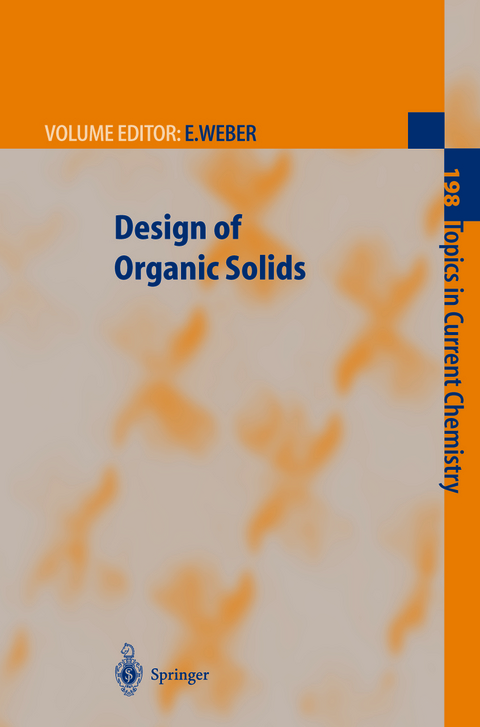
Design of Organic Solids
Seiten
2010
|
1. Softcover reprint of the original 1st ed. 1998
Springer Berlin (Verlag)
978-3-642-08427-0 (ISBN)
Springer Berlin (Verlag)
978-3-642-08427-0 (ISBN)
Considering the high level of our knowledge concerning covalent bond formation in the organic chemistry of molecules, our understanding of the principles involved in organic solid design is almost in its infancy. While chemists today are able to synthesize organic molecules of very high complexity using sophisticated methods of preparation, they lack general approaches enabling them to reliably predict organic crystalline or solid structures from molecular descriptors - no matter how simple they are. On the other hand, nearly all the organic matter surrounding us is not in the single-molecule state but aggregated and condensed to form liquid or solid molecular assemblages and structural arrays giving rise to the appearances and properties of organic compounds we usually observe. Obviously, the electrical, optical or magnetic properties of solid organic materials that are important requirements for future technologies and high-tech applications, as well as the stability and solubility behavior of a medicament depend on the structure of the molecule and the intramolecular forces, but even more decisively on the intermolecular forces, i. e. the packing structure of the molecules to which a general approach is lacking. This situation concerned ]. Maddox some years ago to such a degree that he described it as "one of the continuing scandals in the physical sciences" [see (1998) Nature 335:201; see also Ball, P. (1996) Nature 381:648]. The problem of predicting organic solid and crystal structures is very dif- cult.
Edwin Ernst Weber ist Kreisarchivar des Zollernalbkreises sowie der Landkreise Rottweil, Tuttlingen und Sigmaringen.
Directional Aspects of Intermolecular Interactions.- Supramolecular Synthons and Pattern Recognition.- Hydrogen-Bonded Ribbons, Tapes and Sheets as Motifs for Crystal Engineering.- Functional Organic Zeolite Analogues.- Crystalline Polymorphism of Organic Compounds.
| Erscheint lt. Verlag | 8.12.2010 |
|---|---|
| Reihe/Serie | Topics in Current Chemistry |
| Co-Autor | Y. Aoyama, M.R. Caira, G.R. Desiraju, J.P. Glusker, A.D. Hamilton, R.E. Melendez, A. Nangia |
| Zusatzinfo | X, 220 p. |
| Verlagsort | Berlin |
| Sprache | englisch |
| Maße | 155 x 235 mm |
| Gewicht | 357 g |
| Themenwelt | Naturwissenschaften ► Chemie ► Organische Chemie |
| Naturwissenschaften ► Physik / Astronomie ► Festkörperphysik | |
| Naturwissenschaften ► Physik / Astronomie ► Thermodynamik | |
| Technik ► Maschinenbau | |
| Schlagworte | Carbon rich compounds • crystall engineering • Festkörperchemie • Kohlenstoffreiche Verbindungen • Kristallchemie • Materials Science • Materialwissenschaft • microporous materilas • mikroporiger Werkstoff • molecular recognition • Molekularerkennung • Nanostrukture • Nanostrukturen • Organic materials • Organischer Wersktoff • Polymorphism • Polymorphismus • solid state chemistry • supramolecular chemistry • Supramolekularchemie |
| ISBN-10 | 3-642-08427-3 / 3642084273 |
| ISBN-13 | 978-3-642-08427-0 / 9783642084270 |
| Zustand | Neuware |
| Haben Sie eine Frage zum Produkt? |
Mehr entdecken
aus dem Bereich
aus dem Bereich


